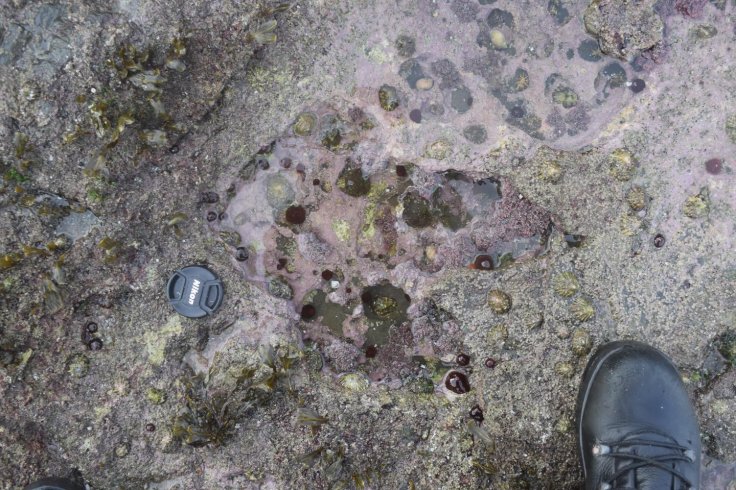
A joint study conducted by researchers at the University of Edinburgh, Staffin Museum and Chinese Academy of Sciences have discovered dozens of giant dinosaur footprints on the Isle of Skye, Scotland.
Experts believe that further analysis of these footprints will shed light on an important period in dinosaur evolution. The footprints which date back to 170 million years were found in a muddy shallow lagoon in the island.
According to researchers, most of the footprints were made by long-necked sauropods which grew more than two meters tall. Some of the footprints discovered were made by therapods, the older cousins of Tyrannosaurus Rex.
Researchers believe that the new footprints discovered were from the Middle Jurassic period, and interestingly, very few fossil sites from this period have been found around the world.
Due to extreme tidal conditions, it was very difficult for the researchers to analyze the footprints. To overcome this problem, they made use of drones and modelling software applications to enhance their work. Finally, the research team succeeded in identifying two trackways in addition to the isolated footprints.
"The more we look on the Isle of Skye, the more dinosaur footprints we find. This new site records two different types of dinosaurs – long-necked cousins of Brontosaurus and sharp-toothed cousins of T. rex – hanging around a shallow lagoon, back when Scotland was much warmer and dinosaurs were beginning their march to global dominance," said Dr Steve Brusatte, from the University of Edinburgh's School of GeoSciences.
Paige dePolo, who led the study said that this Scottish island is a building block for researchers to know how dinosaurs were like during the middle Jurassic period.
"This track site is the second discovery of sauropod footprints on Skye. It was found in rocks that were slightly older than those previously found at Duntulm on the island and demonstrates the presence of sauropods in this part of the world through a longer timescale than previously known. This site is a useful building block for us to continue fleshing out a picture of what dinosaurs were like on Skye in the Middle Jurassic," said dePolo.
Experts also assume that Scotland was much warmer during the middle Jurassic period, and it was at this time that dinosaurs began their march to global dominance.








